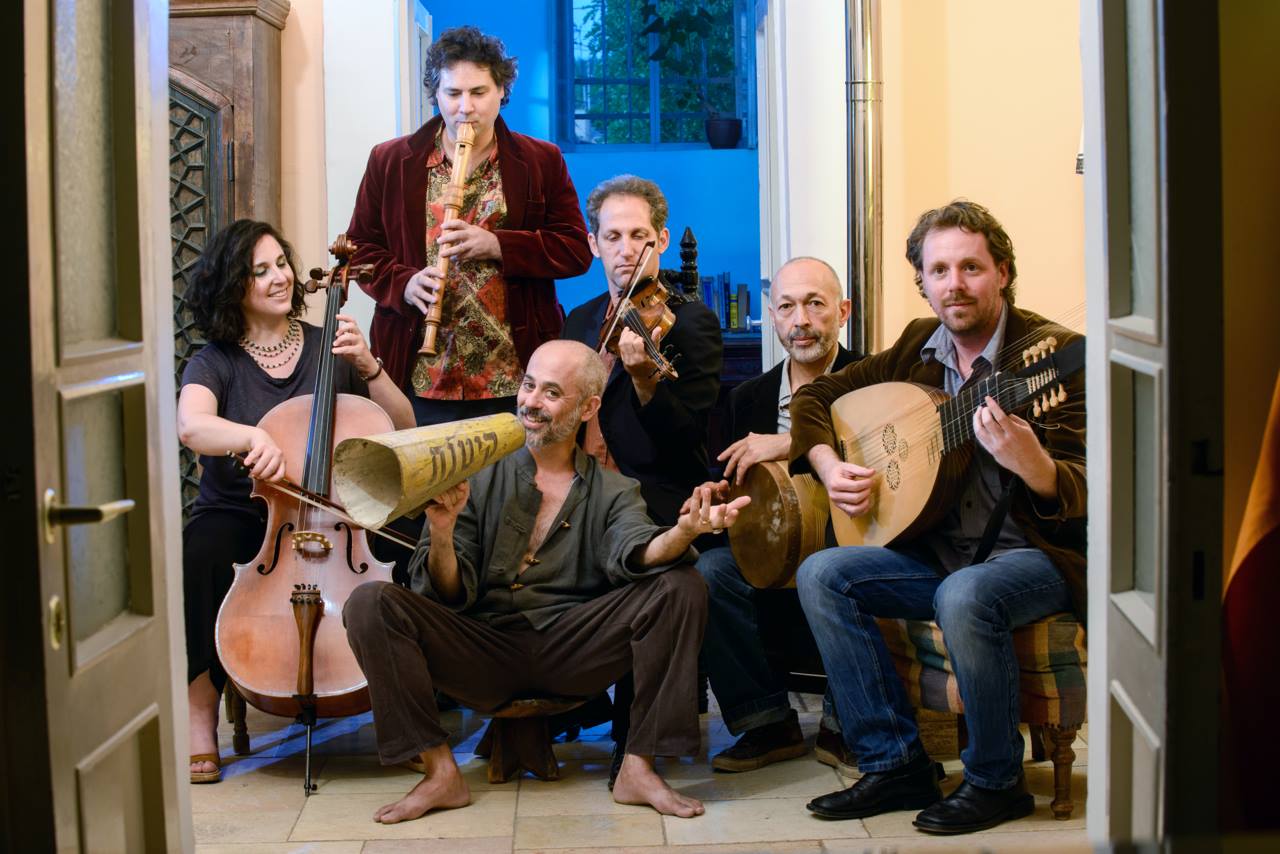14th May 2021 – Shabbat is almost here and Shavuot is coming soon
And today, in the edition 70th, we listen to a music that will transport us back in time to the XVIII century: Di Tsaytmashin and a piece for Shavuot
 Hello, how are you? I am very well. This morning I accompanied my band Vigüela for two performances in a school, one for kids and one for teenagers. Little by little, things start to improve here. The state of alarm in Spain finished last Saturday night. The sun shines, the spring explodes wildly everywhere after the heavy snow of the last winter. And Shavout starts next Sunday.
Hello, how are you? I am very well. This morning I accompanied my band Vigüela for two performances in a school, one for kids and one for teenagers. Little by little, things start to improve here. The state of alarm in Spain finished last Saturday night. The sun shines, the spring explodes wildly everywhere after the heavy snow of the last winter. And Shavout starts next Sunday.
There are several things that made Shavuot very interesting for me. The first one, the tradition of eating dairy products, as I love cheeses. And, the second, it is a tribute to the intellectual effort. It is not mandatory, but a meaningful practice, to stay awake all night in Shavuot studying the Torah. Beyond the religious meaning, for me it symbolizes the value of effort, of overcoming tiredness or laziness, something I have to do many times in my busy life.
Why this custom of not sleeping and why to eat dairy products? If you don’t know, this video is a good introduction. And in this other video there is more information about the custom of eating dairy.
Today, at the bottom, you will find a surprising piece of music about Shavout, by a band named “the time machine” in Yiddish, Di Tsaytmashin, with the singer Avishai Fisz. If you don’t know him, his voice will surprise you!
– But before, I have a small request. If you like Music Before Shabbat, please forward it to your friends who you think might be interested. Seeing this community grow little by little, beyond the pleasure of learning, is all I want in return –
| Share this with a friend, right from here |
About the artists: the band Di Tsaytmashin
One of the features that captivated me from the first time I listened to this piece was the voice of Avishai Fisz, who is also the composer and arranger, reason why I will pay a special attention to him. I was listening without watching and I was not sure if it was a countertenor or a female contralto. According to the website of Yiddish Summer Weimar, Fisz:
“…is a singer, musician, composer, actor and linguist active in the Eastern European as well as modern and avant-garde musical scenes in Israel and worldwide. He performs extensively, both Jewish traditional songs as well as modern works by some of Israel’s leading composers. Over the recent years he collaborates with acclaimed composer Andre Hajdu that also composed especially for him a chamber piece, based on ancient Yiddish folksongs, named “Der Balegole” (The Horseman) […] More recent stage projects include “Trio Carpion” – a lush trio performing Ashkenazi music -with violinist Daniel Hoffman and Eupfonium player Gershon Waiserfirer, “Di Bloye Kats” (The Blue Cat) – a cabaret extravaganza of Yiddish light songs of the 20’s-30’s, with singer Ruth Levin. He is also the stage composer of the critically acclaimed Jerusalem Theatre Company’s premier of “Shulem” and “Rondo”.”
Wow, I think it’s worth keeping an eye on him!

About the piece of music and the book “Sefer Simkhes-Hanefesh”
The song you have below is a live performance of a piece that is included in the album “Yiddish Baroque Music from the Book of the Rejoicing Soul by Rabbi Elkhanan Kirchen”, sign by the band Di Tsaytmashin.
The source for this piece of art that we will listen to today is the book Sefer Simkhes-Hanefesh (you can find it written as Haneyfesh too). The Bibliothèque Medem, in Paris, holds it in their collection. According to the infos shared by the band, it is acredited to Rabbi Elkhanan Kirchen and it was published in Bavaria towards the beginning of the 18th century or end of the 17th century (it depends on the specific source). According to Gilles Rozier in the work The Bibliothèque Medem: Eighty Years Serving Yiddish Culture (Judaica Libarianship, vol. 15, 2009), available here, it was published in Amsterdam in 1723, maybe it refers to that specific edition they have there.
In The Book of Klezmer: The History, the Music, the Folklore, by Yale Strom, Simkhat HaNefesh (The Happiness of the Soul) dates of 1707 in Fürth, Germany. This is so interesting, as it talks about the term of “klezmer”, that I will share with you a little paragraph:
“…by the eighteenth century, klezmer could also mean musician. In the first Yiddish songbook, Rabbi Elkhanan Kirchens Simkhat HaNefesh (The Happiness of the Soul; Fürth, 1707), Kirchen refers to the Jewish musician as a klezmer: “Here is the music I’ve written. It is for dancing with the klezmorim… Even if you can’t read music, there are musicians who can, and they will be able to read it for you.”
This book is available, at least most of it, in Google Books, here. And this mention of Fürth and 1707 is also in the chapter 13 (Klezmer in the New Germany: History, Identity, and Memory, by Raysh Weiss) of the book Three-Way Street: Jews, Germans, and the Transnational, edited by Jay H Geller and Leslie Morris (available here).
In the description of the video in Youtube, that is in the channel of the violinist Daniel Hoffman, he explains that:
“Sefer Simkhes Haneyfesh (“The Book of the Rejoicing Soul”) is an Ashkenazi songbook […] containing songs of morality for the Jewish home. The songs describe in very witty rhymes the diversity of customs for the various Jewish holidays, the exalted consciousness attained by following the jewish tradition, and the pure joy of believing in god. The language of the songs is a form of Old Yiddish, and the musical notation for the songs-the only musical notation existing today for works of Jewish music written in that period-reveal a mesmerizing musical pastiche, spanning from pure baroque polyphony to very spicy folktunes.”
Indeed the music is surprising, enchanting, exotic, full of evocations… I hope you’ll like it and chag sameach Shavuot!
Click the picture to listen to Zing dash Gzang um Shvues: Drinnen gfinshtdu guti Shmues by Di Tsaytmashin:
| Share this with a friend, right from here |
Shabbat Shalom & Chag Shavuot Sameach!
Araceli Tzigane | Mapamundi Música
And we share with you one hour of music for joy in this playlist.
To know more about our artists, click here.
